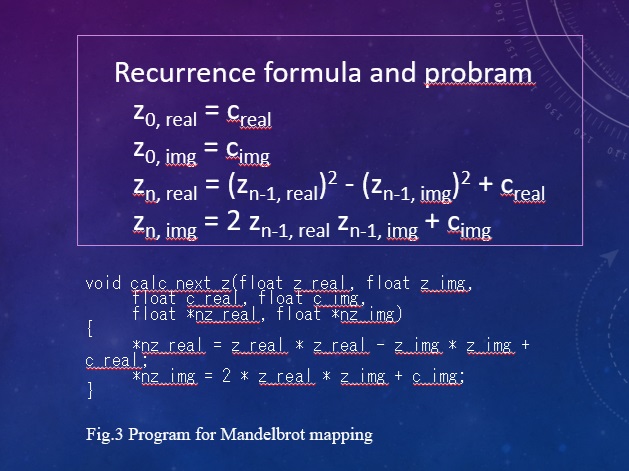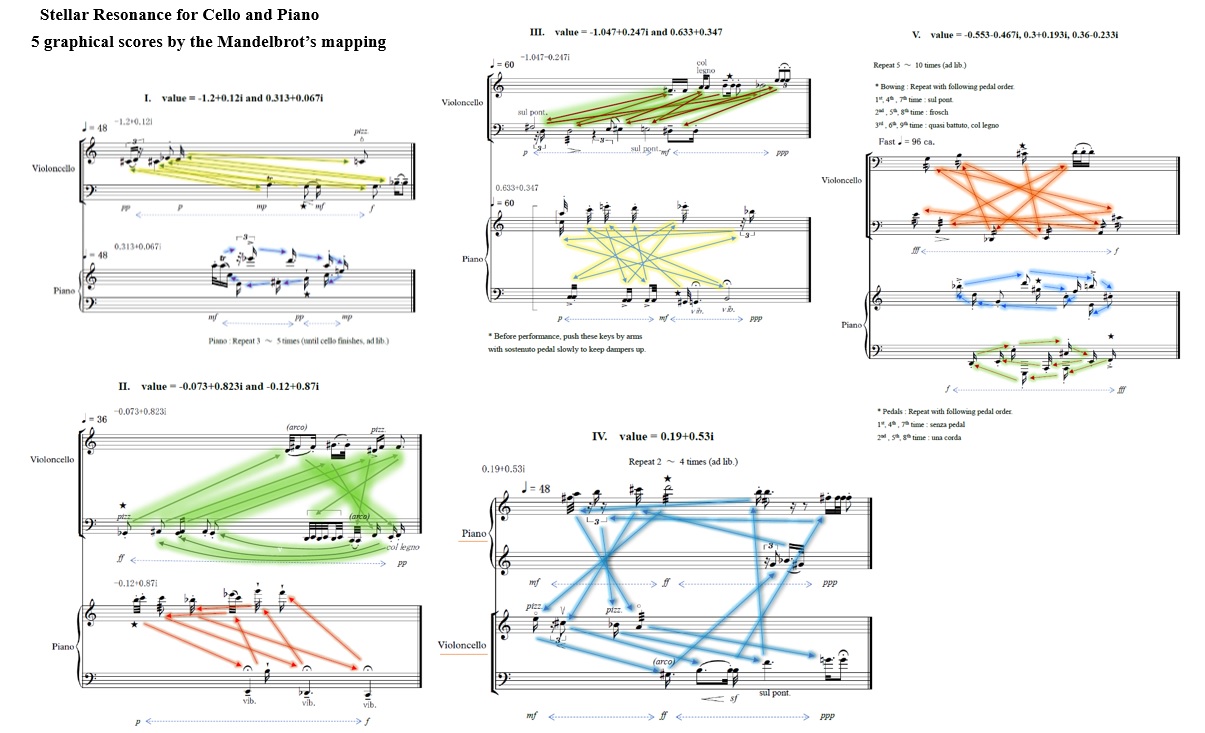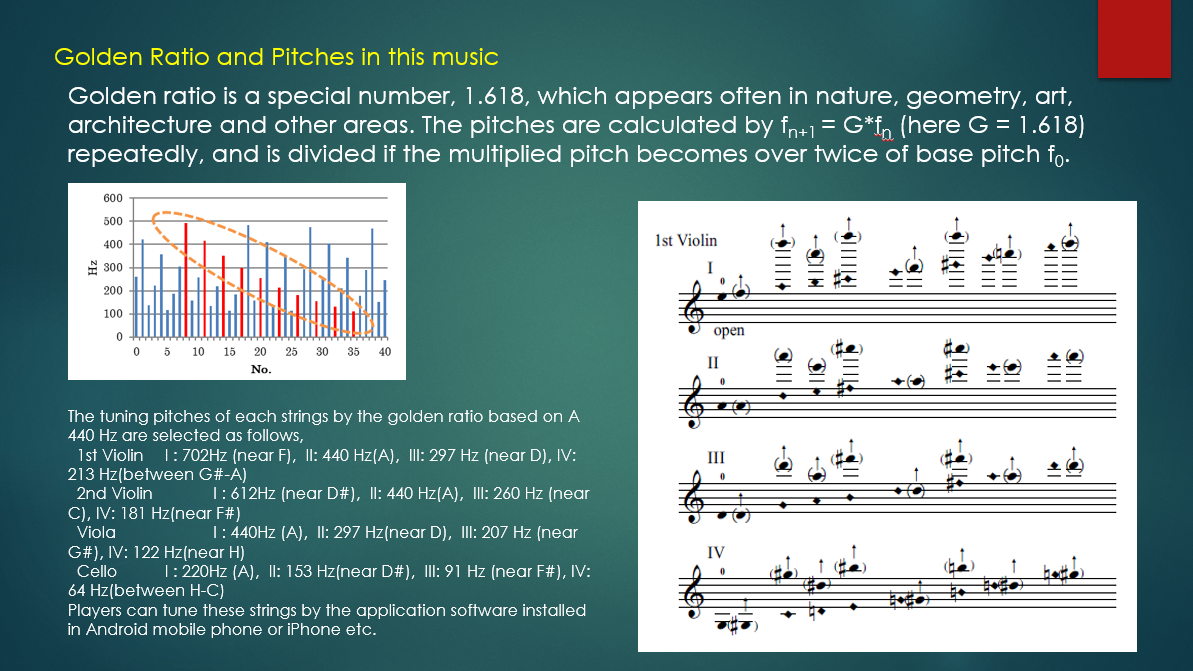| Masao Yokoyama's Works Homepage | Profile | Work | Score&Video | Japanese |
Works based on Computer Science
|
Music composition using sensors, computer program and mathematics. I am a university professor. So I have audio processing and programming classes based on the electronics music and study the multimedia works with students. YouTube Channel : Masao Yokoyama Music and Instrument
|
|
|
1. "The Transfiguration of Spring, Algorithm composition by Mozart's string quartet",
premiered on 2023 Aug. at Megro Persimon Hall, JSSA Music Festival 2023, String Quartet : Green Room Players
This string quartet piece is composed by using the Mandelbrot set, which is one of the most popular nonlinear mappings which depicts very beautiful images. Transfiguring the beautiful and popular score of string quartet gSpringh by Mozart using the interesting mathematical algorithm, I composed this work aiming to fuse the beautiful and structural impression of the original masterpiece with a peculiar and unusual impression induced by the mathematical transfiguration.
For the transfiguration of original score, I developed a computer program which calculates the nonlinear mapping. The timing, pitch, and duration of
the notes are determined using the program from the MIDI data of Mozartfs quartet.
The output values (notes) which are calculated recursively depend on the initial parameters in the Mandelbrot set. I executed the program to generate the short pieces many times while changing the initial parameters, selected the appropriate notes from them carefully and added the articulation, tempo, dynamics and special techniques to the notes.
|
|
|
2."Stellar Resonance for Cello and Piano" 5 graphical scores by the Mandelbrot's mapping, premiered by Piano : Yukina Uehara, Cello : Masao Yokoyama (2023, Tokyo)
This music is composed for cello and piano based on a beautiful mathematical function Mandelbrot's mapping. Right figure : graphical score "Stellar resonance for cell and piano" I developed the original computer program to calculate the nonlinear mapping of the Mandelbrot set to determine the timing, pitch, and duration of the notes. The variation of score depends on the initial value of calculation. As shown by the colored (e.g., red and yellow) lines in the following figure, the output values are calculated recursively and depend on the initial parameters. I mapped these successive values on the score as a graphic score. However, I did not simply put the calculated notes on the score directly. I ran the program many times while changing the parameters of the Mandelbrot set to calculate lots of sets of notes, and selected only agreeable and beautiful notes to this piece carefully. The titles of each movements mean the initial values of Mandelbrotfs mapping used to calculation the consecutive notes.
|
|
|
3."String Quartet by Golden Ratio Harmony" TAMA Musc Festival 2019 at Meisei University, Green room players (vn: Maiko Matsuoka, Syungo Mise, va: Kei Sakota, vc: Aki Kitajima), 2020, Tokyo
In this string quartet, the pitches of tuning calculated by Golden Ratio are used. It produces the special harmony which we cannot listen to in a music tuned in normal tuning. The notes in this piece are written by natural harmonics and open strings. The 5 short pieces in this music have different character each other. Golden ratio is a special number 1.618 approximately 5 of 8th), which appears often in nature, geometry, art, architecture and other areas. T he tuning pitches of each strings by the golden ratio based on A 440 Hz are selected as follows... see more (calculation method etc.) |
Notation for performance
|
|
4."Not just the Environment!", Masao Yokoyama & Yuki Ota. TAma Music and Arts Festival 2021.
This piece is an electronics music based on the sonification of the action and process of human in Japanese culture. The three motions, Sadou which is a traditional culture in Japan, Karate which is an international martial art and Ramen which is a ordinal food and is eaten around the world are expressed by sound and movie using VIVE motion tracker and MAX. Now, the music industry is in the difficult time in many meanings. However, music and culture are there whatever our environment is. |
|
|
5. "Brain Motion for Shakuhachi and Cello - Improvisation by EEG", premiered at TAMA Contemporary Music and Art Festival 2018, Tokyo. Shakuhachi : Reison Kuroda, Cello : Masao Yokoyama.
A brain-waves music systems using MUSE/Mindwave was developed in our laboratory. We also demonstrated, in 2017 International Computer Music Conference at Shanghai, the systems as an audio-visual output, applying Processing that receive signals of brain-waves from MUSE and visualize them. Max/MSP and its plugin, bach are also applied to produce real-time score based on brain-waves signals for a cellist, and Max/MSP is used for live-electronic sound components. One performer's brain waves are used for the source of image processing and score creation. In this video the two students acted as performer who sleep, eat a cake, play Kendama and so on. We intended to show the change of the brain-wave according to the performer's perception as the graphics and music score. |
|
|
|
(c) M.Yokoyama


